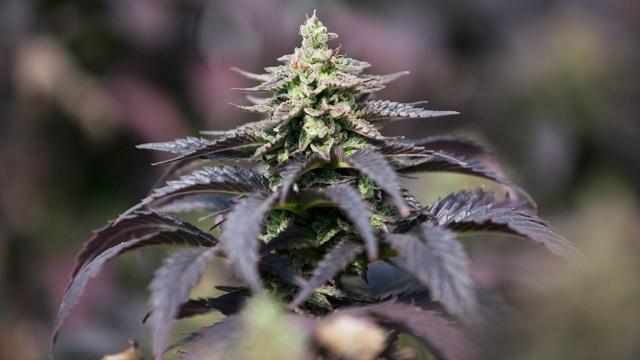Growing Charlotte’s Web cannabis organically is an excellent way to ensure that you produce the highest quality product while maintaining a sustainable and eco-friendly cultivation practice. Organic growing methods avoid synthetic chemicals and pesticides, promoting a healthier plant and environment. This guide will walk you through the best organic growing techniques for Charlotte’s Web cannabis.
Why Choose Organic Growing Methods?
Organic growing methods offer numerous benefits for both the grower and the environment. By choosing organic practices, you ensure that your cannabis is free from harmful chemicals, resulting in a purer product. Additionally, organic growing promotes soil health, biodiversity, and sustainable agriculture practices.
Benefits of Organic Growing
- Healthier Plants: Organic methods improve the overall health and vitality of your cannabis plants, leading to higher yields and better quality buds.
- Environmental Sustainability: Reduces the impact on the environment by avoiding harmful chemicals and promoting biodiversity.
- Better Flavor and Aroma: Organic cannabis is often reported to have a more robust and natural flavor and aroma profile.
Preparing Your Organic Growing Space
Creating the right environment for your organic grow is crucial. Proper preparation ensures that your plants have the best possible conditions to thrive.

Choosing the Right Location
Whether you are growing indoors or outdoors, selecting the right location is key. Ensure your plants receive adequate sunlight (or artificial light for indoor grows) and have proper ventilation.
Soil Preparation
Soil is one of the most important factors in organic growing. Healthy soil rich in organic matter will provide the necessary nutrients for your plants.
Soil Composition
- Compost: Adding compost improves soil structure, water retention, and provides essential nutrients.
- Perlite/Vermiculite: These materials help with soil aeration and drainage.
- Worm Castings: Rich in nutrients, worm castings enhance soil fertility.
Organic Nutrient Management
Feeding your plants with organic nutrients is essential for their growth and development. Organic fertilizers release nutrients slowly, ensuring a steady supply to the plants.
Organic Fertilizers
- Compost Tea: A nutrient-rich liquid made from compost, providing essential nutrients and beneficial microbes.
- Bone Meal: High in phosphorus, it promotes strong root development and flowering.
- Fish Emulsion: A nitrogen-rich fertilizer that supports vigorous vegetative growth.
Natural Amendments
- Rock Dust: Supplies trace minerals and improves soil structure.
- Seaweed Extract: Contains essential micronutrients and stimulates plant growth.
Pest and Disease Management
Organic pest and disease management is about prevention and using natural solutions to protect your plants.
Preventative Measures
- Companion Planting: Growing plants like marigolds and basil alongside your cannabis can repel pests.
- Healthy Soil: Maintaining healthy soil reduces the likelihood of disease.
Natural Pest Control
- Neem Oil: Effective against a variety of pests without harming beneficial insects.
- Insecticidal Soap: A safe option for controlling soft-bodied insects like aphids.
Biological Controls
- Beneficial Insects: Introducing insects like ladybugs and predatory mites can help keep pest populations in check.
- Microbial Solutions: Products containing beneficial microbes can prevent soil-borne diseases.
Watering Practices
Proper watering is crucial for the health of your organic cannabis plants. Overwatering or underwatering can lead to various issues.
Water Quality
- Rainwater: Ideal for watering cannabis as it is free from chemicals found in tap water.
- Filtered Water: Removes chlorine and other harmful substances.
Watering Techniques
- Deep Watering: Ensures the roots receive adequate moisture.
- Mulching: Helps retain soil moisture and reduce evaporation.
Light Management
Light is a critical factor in cannabis growth, especially for indoor cultivation.
Natural Light
- Sunlight Exposure: Ensure your outdoor plants receive at least 6-8 hours of direct sunlight daily.
Artificial Light
- LED Grow Lights: Energy-efficient and provide the full spectrum of light needed for cannabis growth.
- Light Cycles: Manage light cycles (18/6 for vegetative, 12/12 for flowering) to optimize plant growth.
Harvesting and Post-Harvest Techniques
Proper harvesting and post-harvest techniques are essential to preserve the quality of your organic cannabis.
Harvest Timing
- Trichome Monitoring: Use a magnifying glass to check the trichomes. Harvest when they are mostly milky with some turning amber.
- Pistil Color: Harvest when most pistils have darkened and curled in.
Harvesting Techniques
- Cutting: Use clean, sharp scissors to cut the branches.
- Trimming: Remove large fan leaves and trim sugar leaves.
Curing and Storage
- Drying: Hang branches upside down in a dark, well-ventilated area until stems snap easily.
- Curing: Place dried buds in glass jars, opening them daily for the first week to release moisture.
- Storage: Store cured buds in a cool, dark place to preserve potency and flavor.
Conclusion
Organic growing methods for Charlotte’s Web cannabis offer a sustainable, eco-friendly way to produce high-quality, therapeutic cannabis. By following these techniques, you can ensure that your plants are healthy, your environment is protected, and your final product is top-notch. Embrace organic growing and experience the benefits of cultivating cannabis in harmony with nature.

